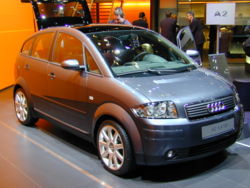East Europe’s Flat Tax Revolution
June 30, 2007
I’ll say it again. The secret of economic success can be summed up in four words:
Low Taxes, Stable Money
“Low Taxes” can take a number of forms. Some countries have had high marginal income tax rates, but the tax applies at very high incomes and taxes on capital are low, so most people experience low taxes. Other countries have no income tax at all, and rely on tariffs or other means for revenue. This was true of the US and Japan in the 19th century. One of the most successful formats has been the “flat tax,” a very simple income tax typically in the mid-teens. Hong Kong is perhaps the pioneer of this system, with a 17% income tax, 16% corporate tax, and no taxation of interest income, dividends, capital gains, or inheritances. There is no payroll tax or sales tax/VAT either.
Estonia was the flat-tax pioneer in post-Soviet Europe, with a 26% flat tax implemented in 1993. This, plus a deutschemark currency board (stable money) pulled the economy out of hyperinflationary disaster in the early 1990s. Since then, the country has gone from success to success, and is gradually becoming a rather fashionable place.
The next big step was Russia in 2000, with its revolutionary 13% flat tax. Russia was a true disaster in the late 1990s, but since then it has enjoyed explosive growth, with nominal GDP increases (measured in dollars) in the mid-20% range.
Today we can count quite a few Eastern European countries with low/flat taxes of 20% or less:
Bosnia-Herzegovina (not “flat” but top rate under 10%)
Georgia (12% effective 2005, replaces system with 20% top rate)
Romania (16% effective 2005)
Russia (13% effective 2000)
Serbia (14% effective 2003)
Slovakia (19% effective 2004)
Macedonia (10% corporate and personal, effective 2007. Replaces 15% corporate and 24% personal top rate)
Ukraine (13% effective 2004)
Kazakhstan (10% effective 2007)
Kyrgystan (10% effective 2007, replaces system with 20% top rate)
Mongolia (10% effective 2007, replaces system with 40% top rate)
Estonia (26% effective 1994, 22% today but headed to 18% in 2011)
Latvia (25% effective 1995) and Lithuania also have “flat taxes”, but at rates over 20% plus high VAT rates, that doesn’t really cut it in my book.
The man to talk to about flat taxes worldwide is Alvin Rabushka, an acquaintance of mine, who keeps close tabs on the spread of flat taxes and their positive economic effect.
Now pay attention: this is the interesting bit.
One effect of the flat tax is to also help create monetary stability. The result is — Low Taxes, Stable Money — and wonderful economic growth throughout the region. How far can it go? Hong Kong was once a backwater manufacturer of cheap consumer goods. Now it is a leading “first-world” city. If Hong Kong, population 6 million, can do that, then certainly Slovakia, population 5 million, can do something similar. I would not be surprised if, sometime in the future, Slovakians quietly pass West Germans in the wealth and abundance game, just as Hong Kongers have surpassed Americans. Probably nobody will notice when this happens.
Flat taxes help create monetary stability because one result of lower taxes and higher growth is greater monetary demand, which tends to make currencies rise. Most currency managers, including those of the above-listed countries, are rather incompetent. However, when their currencies get a rising trend powered by the flat tax and growth, they are at least able to suppress the currency a bit, keeping it roughly in line with whatever their benchmark may be, in this case the euro. (Most countries have also committed themselves to joining the eurozone in a number of years, which requires them to essentially peg their currencies to the euro.) As the currencies become more stable and predictable, interest rates plummet from perhaps the 15% range to eurozone rates under 8%. This helps enable an enormous expansion of finance, another economic driver. Plus, more stable currencies are a great boon to international trade, which is very important to these small countries. So, you have much lower taxes PLUS a more stable currency PLUS much lower interest rates PLUS a credit boom PLUS better trade conditions, leading to huge growth.
All of that from a simple tax policy!
It has also helped that most major currencies have had a declining trend versus gold, which once again makes currency management relatively simple for these small countries — simple enough that even dunces can handle it.
This huge success — repeated over and over again with the same results — is getting a lot of attention from more sclerotic governments such as those in Germany or Austria. We could see Poland, Hungary and the Czech Republic go the flat-tax route within five years. I’ve got my eye on Turkey, a country of 71 million people. That’s almost as much as Germany (82 million). What would happen if Turkey adopted a flat tax? Woo hoo!
I’ve got a better idea. A few months ago, I was invited to a breakfast with the finance minister of Turkey, a surprisingly capable man. I could tell just by listening to him speak for about ten minutes that he is NOT a dunce. He brought up a surprising statistic — that only about 10% of the Turkish government’s entire tax revenue comes from the income tax (I’m working from memory here). The top rate is 40%. At the same time, there’s an 18% VAT. You see, the FM of Turkey thinks about this stuff. I can tell. “Well, we aren’t actually getting much money from this tax…is it really necessary?”
The 18% VAT sounds a lot like proposals in the US (from Mike Gravel for instance) to replace income taxes with a “federal sales tax” of about 19%. For Turkey I propose — not a flat income tax — but no income tax at all! This could be accomplished in a series of stages over about three to five years. For example, the top 40% rate could be reduced to 20% the first year, 10% the third year, 5% the fourth year and eliminated in the fifth year. Turkey has already moved in this direction somewhat, as it lowered its corporate tax from 30% to 20% in 2006. The corporate rate could be reduced to 10% in year 2 and eliminated in year 5. The result of such a policy, as shown by the eight flat-taxers above, would be a roaring expansion of of economic activity accompanied by a roaring expansion of tax revenue.
Now if you think Turkey would be a bombshell with a flat tax (or no tax), what about China? In 2003-2005, China reduced and then eliminated agricultural taxes for 900 million farmers — probably the first time farmers have been able to operate tax-free in 5000 years. I think this is one thing powering the Chinese economy today. China has the Grandfather Of Them All — Hong Kong — in its backyard, and maybe Mongolia will soon be teaching the Chinese a few lessons.
One of the reasons why I concentrate on Stable Money more than Low Taxes is because we already have several governments who are absolutely knocking the ball out of the park with their low-tax policies. We also have a pretty good network of low-tax advocates, such as Alvin Rabushka. How many governments have gold standards? Right — zero.
If you think things are pretty spiffy with flat taxes in Europe, or lower taxes in China, you have no idea what is possible when the forces of economic creation are fully lined up in mega-growth mode — when flat-tax type systems are paired with a fully-functional gold standard. That will be something to see.
* * *
A reader brought up a good point regarding fuel economy. You save (or, in our terminology, don’t use) more fuel going from 25mpg average to 50mpg than you do going from 50mpg to 500mpg. 50mpg is not really a very high hurdle. Here are two more SUV alternatives, available for sale now or within five years.

Audi A2
better than 3l/100km (about 75mpg)
175,000 units sold 2000-2005
Seats four. Roughly 2000 lbs.

Aptera Typ-1
230mpg at 55mph
Seats 2 plus storage
0-60 in under 10 seconds
approx 900 lbs
expected sale price around $20,000
www.apteramotors.com
Now, this is even more promising than the Loremo in my opinion. Considerably better acceleration, and much better gas mileage. Note that most super-mileage statistics are for more like 20mph, where the wind resistance is much lower, and for designs with rather piteous acceleration, fully optimized for maximum efficiency.
That said, we are really better off with trains for urban areas — and most people live in (sort-of) urban areas.

